Richard Amis (1932–2018), a pupil at Eton College between 1945 and 1950, bequeathed over 50 works of art to the College Collections. This online exhibition presents a selection of 28 of the most significant examples. Amis’s lasting affection for Eton College is evident, both in the subject of some works and in his resolve that these pictures should join the Eton Collections, to ‘be kept together and well looked after, and perhaps spark an interest in some boys, as my tutor… and his watercolours did for me.’
From 1974 to 1986 Amis served as Chairman of Alfred Booth and Co., his maternal family’s firm and originally a Liverpool trading and shipping company. His bequest includes inherited works that reveal these connections. Amis also purchased several watercolours by significant 18th- and 19th-century artists from London art dealers. They were bought to complement works by the same artists already in the Eton Collections, such as J.M.W. Turner (1775–1851), J.R. Cozens (1752–1797) and David Cox (Snr) (1783–1859).
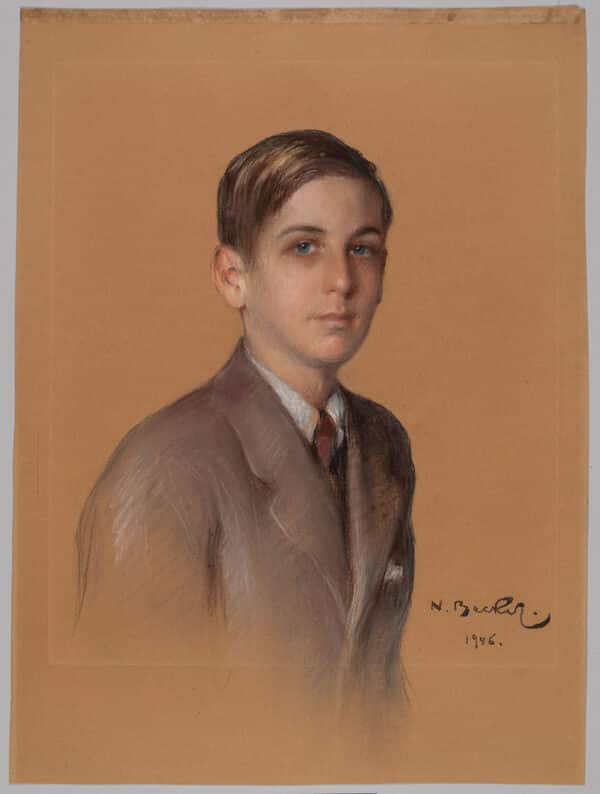
Richard Amis, 1946
Nikolai [Nicolas] Becker (1877-1962)
Pastel on paper
Russian society portrait artist Nikolai Becker had joined the post-revolutionary exodus from Russia to settle in Europe by the time he made this pastel portrait of Richard Amis, who was then aged just 14 or 15. Amis is shown not in his Eton College uniform, but smartly dressed for the portrait, which was probably commissioned by his parents.
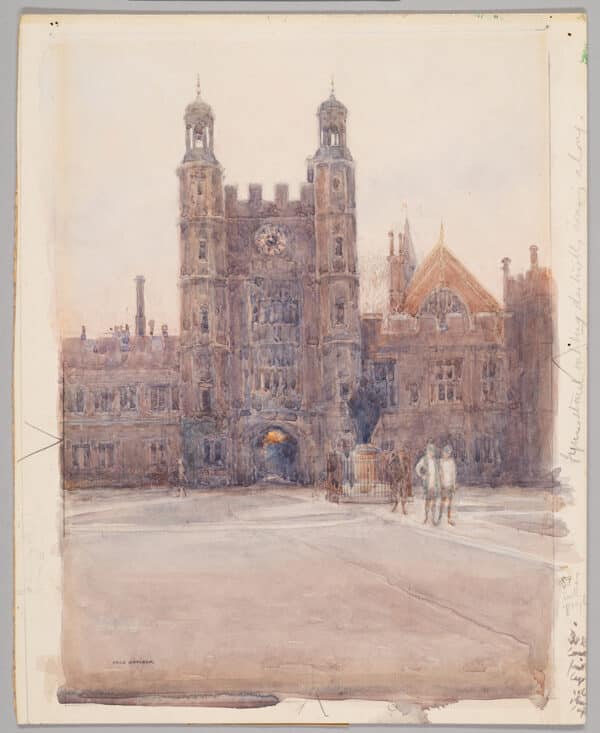
School Yard, Eton College
Nora Davison (1855-1950)
Watercolour over pencil on paper
Emily Susannah Eleanor (Nora) Davison, the daughter of a clergyman, was born in Worcestershire. In 1884 she began exhibiting watercolours of marine subjects at the Society of Women Artists in Great Marlborough Street, London. A solo exhibition of her work was held in Birmingham in 1901. Davison later moved from London to Ilchester, Somerset, to live with her brother, the headmaster of a local school. He was an Old Etonian and it may have been this link that encouraged Davison to relocate to Eton following her brother’s death in 1913. Davison became a well-known figure at Eton College and would be remembered ‘sitting on her camp-stool, often with a cluster of boys looking on as she painted some Eton building. Cold, wind and rain could not keep her indoors…’. She remained at Eton until 1934, when she moved to Worcester but continued to return to the College each year to paint. Richard Amis may well have been one of the boys ‘looking on’ as she worked.
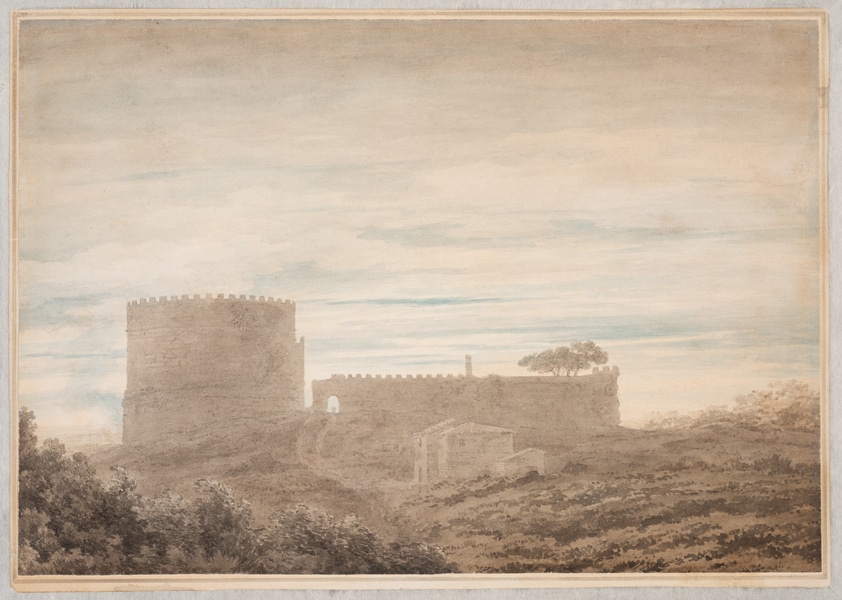
Capo di Bove, Morning, c.1783
John Robert Cozens (1752-1797)
Watercolour on paper
J.R. Cozens is celebrated for his evocative and melancholy landscape watercolours, often painted in muted palettes with subtle gradations in tone. In 1782, six years after his first journey to Italy, Cozens set off from Dover in the company of his patron, the wealthy writer and art collector William Beckford of Fonthill (1760–1844). Cozens had already worked up a series of Italian views for Beckford, from sketches made during his first trip. Further examples were now produced, with Beckford probably making Cozens aware of his preferred subjects. As before, Cozens recorded the views in pen, ink and wash, with colour notes, in sketchbooks and on individual sheets. Most would be worked up into larger compositions on his return. This work is thought to be one of three views of the Mausoleum of Cecilia Metella, near Rome, by Cozens that were owned by Beckford and featured in his sale at Christie’s, London, in 1805.
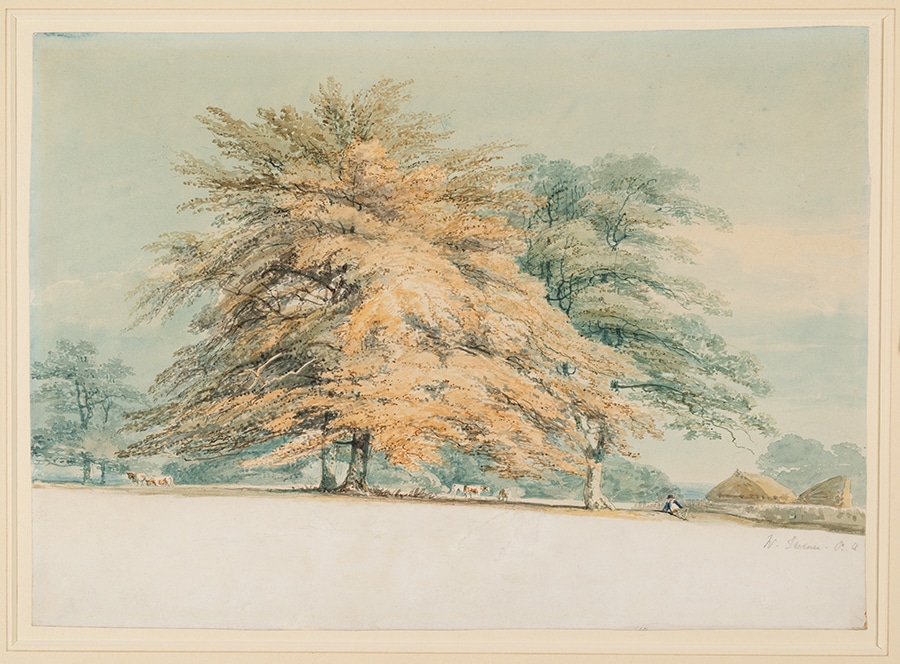
Beech Trees in a Park, c.1796
Joseph Mallord William Turner (1775-1851)
Watercolour over pencil on paper
This delicate drawing is thought to have been made on the estate of Turner’s friend and patron William Lock (1732–1810). Lock had commissioned Turner to draw his fern house at Norbury Park in Surrey. The resulting drawing is now untraced. However, in the grounds of the Norbury estate, Turner also made a remarkable series of studies of beech trees. The writer, illustrator and painter William Henry Pyne (1769–1843) later commented on this group of work: ‘His early studies of trees are invaluable, they show exquisite taste, beautiful and graceful forms, with careful drawing and they generally are of the most simple and rustic character.’
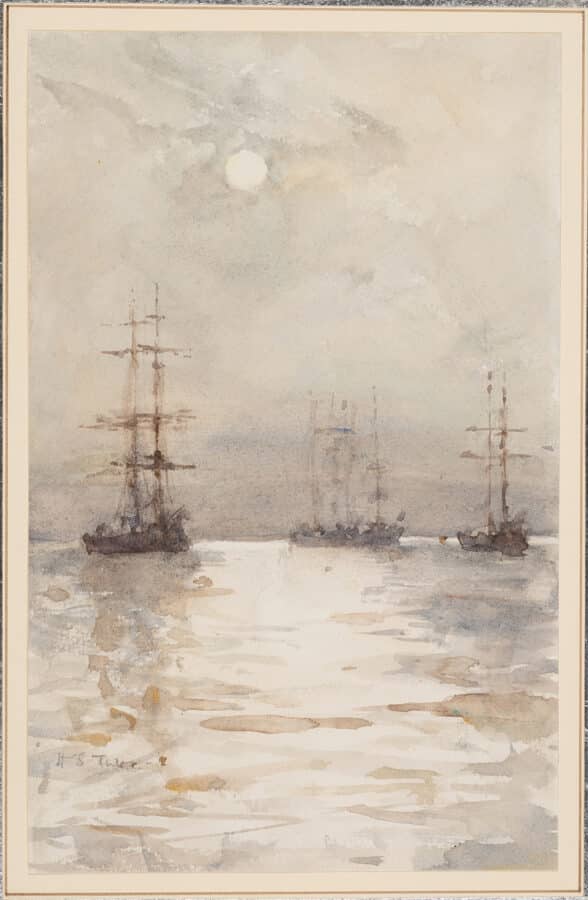
Shipping Scene at Night, c.1900
Henry Scott Tuke (1858-1929)
Watercolour over pencil
Henry Scott Tuke was born in Yorkshire but moved to Falmouth at a young age for the sake of his father’s health. He enrolled at the Slade School of Art in London, aged 17, before studying in Paris and Italy. Tuke joined the colony of painters at Newlyn, Cornwall, in 1883 and embraced their practice of painting people going about their daily lives outdoors, rather than posing professional models in studio settings. He later focused on the nude and is best known for his views of young male bathers on sandy Cornish beaches. In 1885, soon after the completion of the new docks, Tuke returned to Falmouth, remaining until his death in 1929. He was a keen sailor and his passion for boats and ships led him to produce numerous meticulously studied watercolour records of vessels, such as this example. These have been described as collectively creating a virtual survey of sailing ships still afloat. Tuke exhibited these works at the Royal Society of Painters in Water Colours in London and many were sold at the gallery he established with fellow artists in Falmouth.
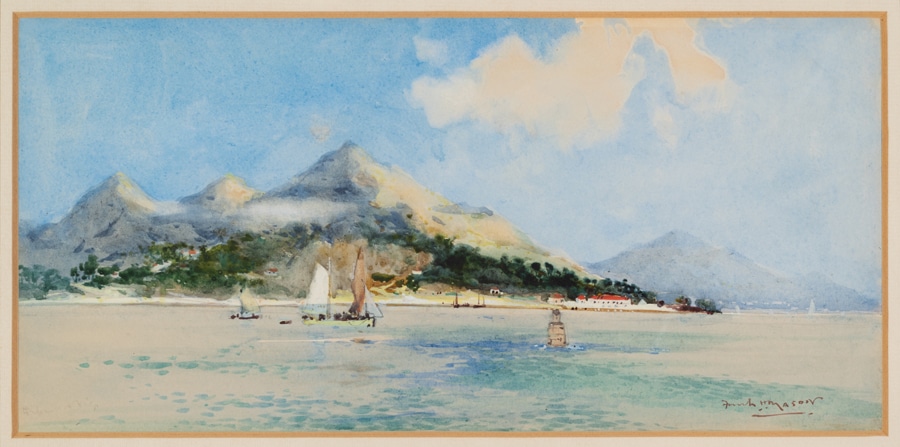
Approach to Vigo, c.1909
Frank Henry Mason (1875-1965)
Watercolour on paper
This work by Frank H. Mason was undoubtedly inherited by Richard Amis from his family. Mason was commissioned by the Booth Steamship Company to produce advertising images. A note written by Richard Amis indicates that it was made to illustrate a Booth Steamship Line calendar. This may be the calendar advertised in the London Evening Standard on 3 January 1911: ‘The well-known Booth Steamship Line have issued an attractive easel calendar for 1911, containing twelve excellent reproductions in colours of Mr Frank H. Mason’s charming pictures of Portugal, Galicia and Madeira, which give a good idea of the beautiful scenery on the Booth tours.’
The Booth directors commissioned Mason and the writer-photographer Walter Wood to travel to Galicia with the aim of producing publications to advertise their tours. Wood and Mason (accompanied by Mason’s wife) left Liverpool aboard the Ambrose on 11 October 1909 and travelled for a month. A book titled A Corner of Spain, written by Wood and illustrated by Mason, was also published in 1910.
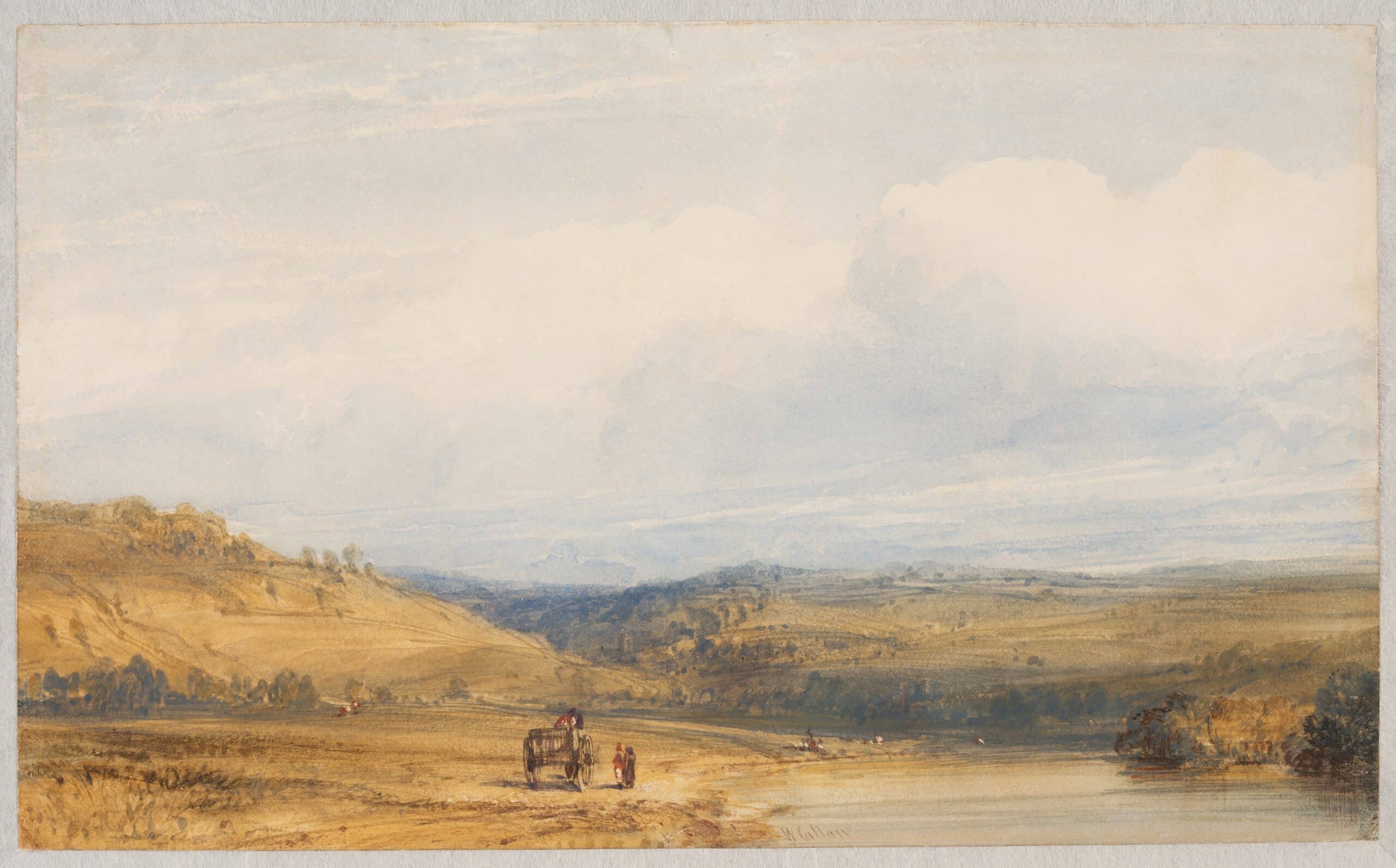
Meudon on the Seine, c.1834
William Callow (1812-1908)
Watercolour on paper
At just 15 years of age William Callow, then apprenticed to printmaker Theodore Fielding (1781–1851), was invited to relocate to Paris to assist in engraving illustrations for Le Rhône by Jean-Baptiste Sauvan (published 1829). Although he returned briefly to England during the 1830 Revolution in France, in February 1831 Callow travelled back to Paris, remaining until he commenced long walking tours through France, Switzerland and Germany from 1835. During his time in Paris, Callow met both French and British artists who would be a considerable influence on his career, notably R.P. Bonington whose influence is most apparent in Callow’s river scenes. This example was made at Meudon, just west of the Seine, now a busy suburb of Paris.
The catalogue for the exhibition held at London in September 2023 and at Eton from 15 November 2023 to 24 March 2024 may be downloaded below

